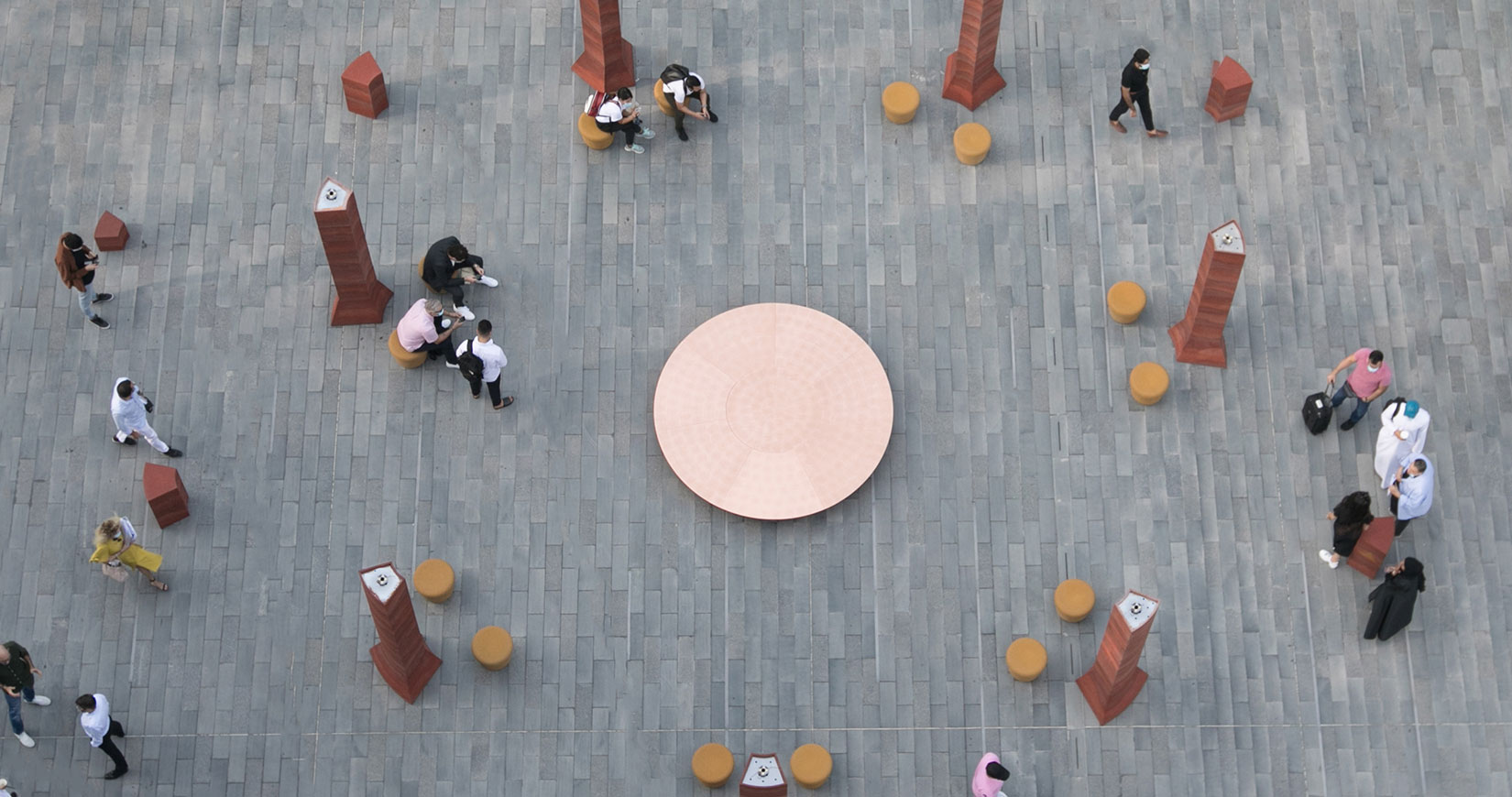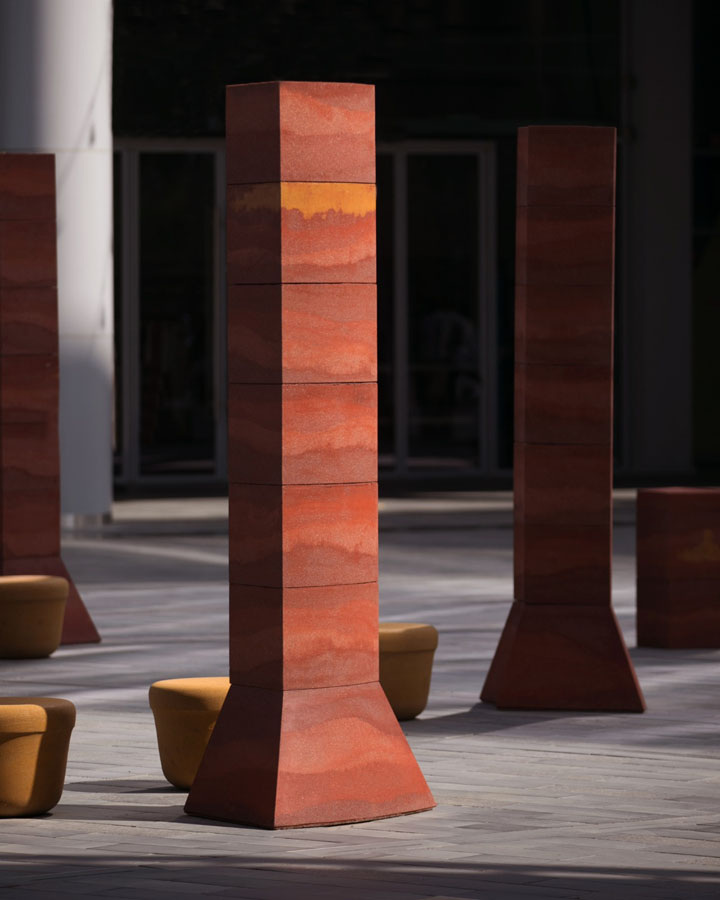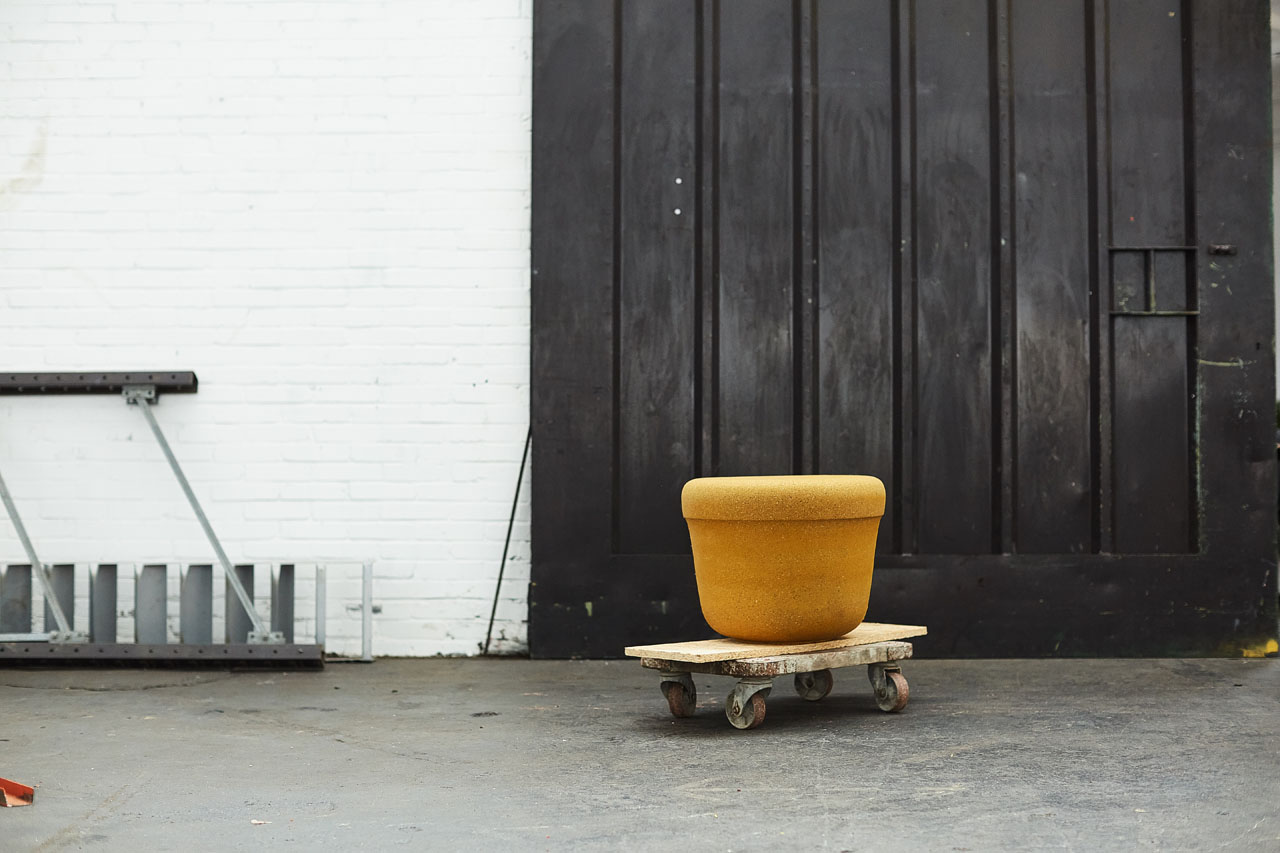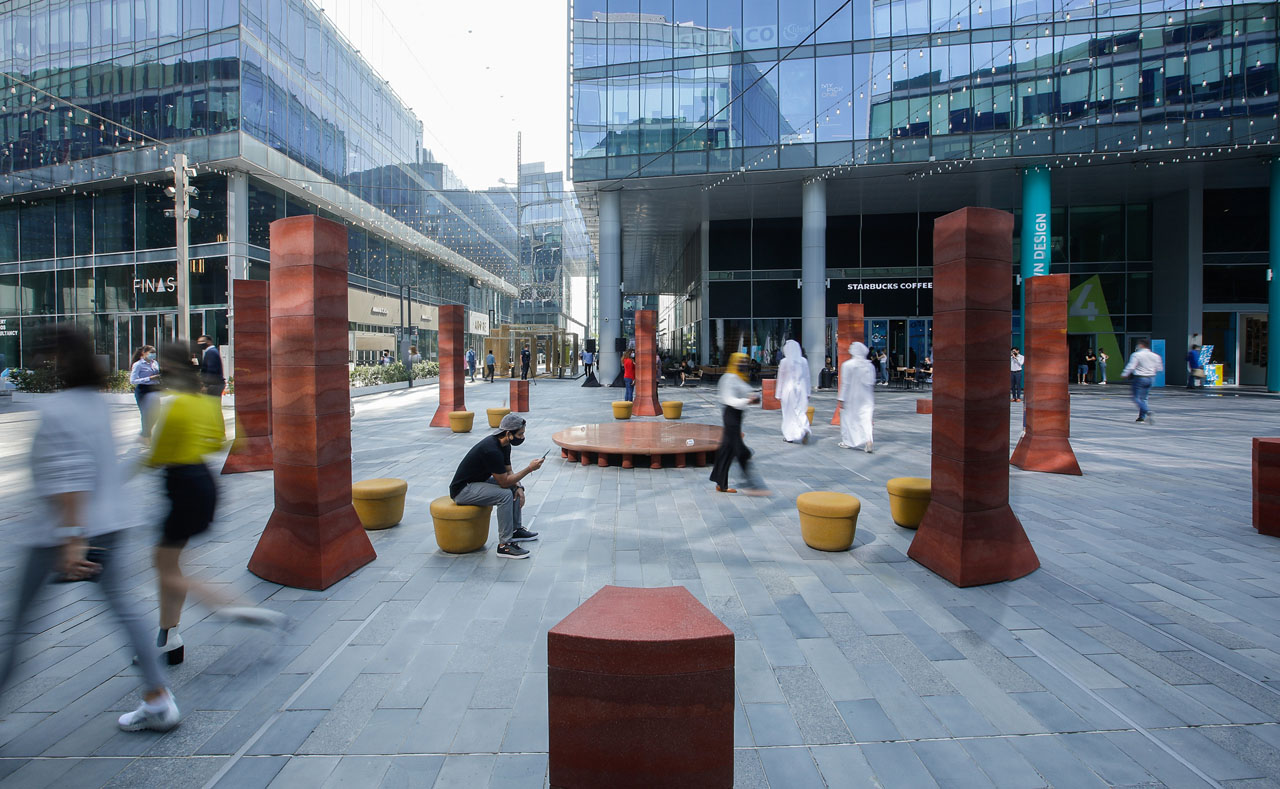Copyright © 2025 Motivate Media Group. All rights reserved.
identity’s highlights from Dubai Design Week 2020
We highlight designs from the UAE Designer Exhibition to Tashkeel's exhibition

Fata Morgana by Hozan Zangana

The annual Abwab pavilion, which acts as a portal for design innovation from the MENASA region, was created this year by Iraqi designer Hozan Zangana in collaboration with master craftsman Woodcast Designs and generous.studio.
Selected by a jury of designers, architects and curators, ‘Fata Morgana’ presents a conceptual framework for a modern-day city. The outdoor installation offers an open-plan arrangement of public seating, divided by seven pillars at different heights – all set around a convivial circular table at the centre.

Exploring the ever-changing relationship between people and the public realm, ‘Fata Morgana’ responds to physical distancing measures set as a result of the COVID-19 pandemic. Simultaneously, the organisation of the installation amplifies the necessity to cross paths with strangers through a series of pivotal intersections aiming to reactivate spontaneous social interactions.

“The installation, with its varying height levels, can be seen as a skyline with the seven pillars (symbolising the seven emirates) in the middle and smaller ones around them. The table and circular seating are inspired by the majlis, a traditional way people would meet and come together. The two stools per pillar represent the importance of the man and woman, who deserve a seat at the table,” Zangana explains.
All the shapes of the installation are derived from a circle which is a symbol of strength; it has no sharp edges and is independent from its environment,” Zangana adds. “All the elements of the installation together form a basic circle, symbolising unity.”
‘Fata Morgana’ additionally offers research into regionally contextual materials and production processes as a nod to historical construction methods. “The rammed earth technique is used to build the different elements of the pavilion and symbolises the earth which is the foundation of culture and heritage in the MENA region.”
‘Fata Morgana’ in itself is a mirage-like phenomenon that occurs in the desert. Its name hints at a shimmering beacon in the distance. The installation aims to provoke a similar reaction to that of a ‘Fata Morgana’; awakening a sense of interest and curiosity that attracts viewers to come together to reflect and interact from a distance.
Zangana, who was forced to flee the war in Iraq at the age of 14, recounts how his childhood memories inspired the installation.

“Fata Morgana brings back vivid memories from my childhood,” he says. “I remember riding on the top of a large truck in Iraq in the heat of summer. My family was traveling from Erbil to Bagdad to visit our relatives and due to the war, this was the only way we could reach them. As I would sit on the top of the truck and look back in the distance, the heat would distort the scenery and create different shapes and forms. The colours would melt together and there was no way of telling if the image was real or not. Almost like a trance, as if my life was a movie.
“All of my work has some kind of connection to my childhood and past experiences. My objects represent a number of my fascinations or a personal memory, such as standing in long lines to get petrol during the war. It is important to me that we remember where we come from, what our heritage really means; the good and the bad. I want to share the richness of our cultural heritage and also raise awareness for personal endurance. This is what connects us: personal stories we can relate to.”
The Latest
Turkish furniture house BYKEPI opens its first flagship in Dubai
Located in the Art of Living, the new BYKEPI store adds to the brand's international expansion.
Yla launches Audace – where metal transforms into sculptural elegance
The UAE-based luxury furniture atelier reimagines the role of metal in interior design through its inaugural collection.
Step inside Al Huzaifa Design Studio’s latest project
The studio has announced the completion of a bespoke holiday villa project in Fujairah.
Soulful Sanctuary
We take you inside a British design duo’s Tulum vacation home
A Sculptural Ode to the Sea
Designed by Killa Design, this bold architectural statement captures the spirit of superyachts and sustainability, and the evolution of Dubai’s coastline
Elevate Your Reading Space
Assouline’s new objects and home fragrances collection are an ideal complement to your reading rituals
All Aboard
What it will be like aboard the world’s largest residential yacht, the ULYSSIA?
Inside The Charleston
A tribute to Galle Fort’s complex heritage, The Charleston blends Art Deco elegance with Sri Lankan artistry and Bawa-infused modernism
Design Take: Buddha Bar
We unveil the story behind the iconic design of the much-loved Buddha Bar in Grosvenor House.
A Layered Narrative
An Edwardian home in London becomes a serene gallery of culture, craft and contemporary design
A Brand Symphony
Kader Mithani, CEO of Casamia, and Gian Luca Gessi, CEO of Gessi, reflect on the partnership between the two brands
The Art of Wellness
Kintsugi in Abu Dhabi, situated in a seven-storey villa, offers the ultimate zen retreat
















